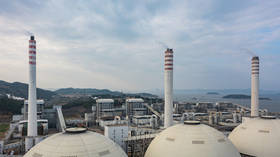New Chinese nuclear plant a ‘world first’

The world’s first fourth-generation nuclear power plant (NPP) has officially started commercial operation in the Chinese province of Shandong, the National Energy Administration (NEA) announced on Wednesday.
A high-temperature gas-cooled reactor (HTGR) at the Shidao Bay NPP, commonly known as Shidaowan, successfully completed the 168-hour non-stop test and has officially been put into operation, according to the statement.
According to the International Atomic Energy Agency (IAEA), innovative reactors produce up to 70 times more energy, increase the sustainability of nuclear power, and help reduce the volume, toxicity, and lifespan of radioactive waste.
“China has reached the world’s leading level in the research, development and application of fourth-generation nuclear power technologies,” the NEA said, adding that the commissioning of the NPP will have help promote the safe development of nuclear power and improve China’s scientific and technological innovation capabilities.
The chief designer of the HTGR nuclear power plant program, Zhang Zuoyi, told Xinhua that “safety” is its key feature, noting that “the reactor can maintain a safe state and steer away from a meltdown or leak of radioactive materials.” He added that even in the event of a total loss of cooling capacity, the reactor would be able to maintain this capability without any intervention.
In March 2002, China Huaneng began preliminary work on the NPP demonstration project with China Nuclear Engineering and Tsinghua University. The implementation plan was approved in March 2011 but was postponed after the radiation accident at the Fukushima NPP in Japan occurred the same month as a result of the earthquake and subsequent tsunami.
In December 2012, the Shidaowan project was officially launched with the first power being generated nine years later.
China ranks third in nuclear power generation after France and the US, according to the IAEA, and is expected to lead the world in installed nuclear power capacity by 2030.













